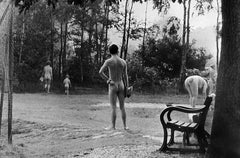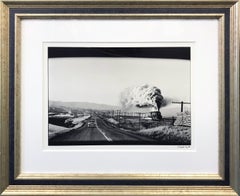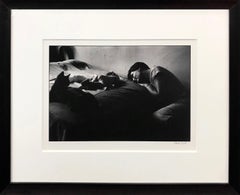Elliott Erwitt On Sale
1960s American Modern Black and White Photography
Silver Gelatin
1960s Contemporary Black and White Photography
Silver Gelatin
1960s American Modern Black and White Photography
Silver Gelatin
Recent Sales
Mid-20th Century Contemporary Black and White Photography
Silver Gelatin
1950s Contemporary Black and White Photography
Silver Gelatin
1950s Contemporary Black and White Photography
Silver Gelatin
1950s Contemporary Black and White Photography
Silver Gelatin
1980s Contemporary Black and White Photography
Silver Gelatin
1960s Contemporary Black and White Photography
Silver Gelatin
1960s Contemporary Black and White Photography
Silver Gelatin
People Also Browsed
2010s Mexican Brutalist Contemporary Art
Wood
21st Century and Contemporary Swedish Mid-Century Modern Table Lamps
Textile
Late 20th Century French Modern Photography
Paper
Early 20th Century French Drawings
Paper
2010s Contemporary Figurative Paintings
Linen, Oil
2010s Contemporary Figurative Paintings
Canvas, Oil
2010s American Realist Nude Paintings
Canvas, Oil
1990s Italian Greco Roman Busts
Marble
Vintage 1950s American Art Deco Drawings
Vintage 1920s German Art Deco Paintings
Paint
Vintage 1950s American Mid-Century Modern Photography
Other
Vintage 1950s American Mid-Century Modern Photography
Other
1960s Other Art Style Portrait Photography
C Print
2010s Contemporary Paintings
Canvas, Oil
1970s Other Art Style Figurative Photography
Black and White
1960s Pop Art Black and White Photography
Silver Gelatin
Elliott Erwitt for sale on 1stDibs
Elliott Erwitt's original photography, journalistic essays, illustrations and advertisements have been featured in publications around the world for over forty years.
Erwitt was born in France to émigré parents in 1928. His formative years were spent in Italy. At the age of 10, he moved with his family back to France and emigrated to the United States in 1939, settling in New York for two years and then transferring to Los Angeles.
In the early 1950s, Erwitt moved to New York City by way of Pittsburg, Germany and France (the last two locations courtesy of the United States Army). He settled in New York for good, establishing his fundamental base of operations ...although "settling" in Erwitt parlance meant "where you are at the moment for as long as you don't go somewhere else."
Flexibility and adaptation to the requirements of the profession and personal interests kept Erwitt moving around the globe before returning to New York. While attending Hollywood High School Erwitt worked in a commercial darkroom processing "signed" prints for fans of movie stars. In 1949 he returned to Europe. He traveled and took photographs in Italy and France thus making the start of his professional career.
Drafted into the US Army in 1951, Erwitt took photographs for various publications in addition to fulfilling his military duties while stationed in New Jersey, Germany and France. By good fortune, while looking for work on exploratory trips to New York City before the start of his military service, he met Edward Steichen, Robert Capa and Roy Stryker who liked his photographs and took a personal guiding interest becoming significant mentors.
In 1953, freshly decommissioned from military service, Erwitt was invited to join Magnum Photos as a member by its founder Robert Capa. In 1968 he became president of the prestigious agency for three terms. Erwitt continued for decades to be an active member and one of the leading figures in the competitive field of photography.
While continuing his work as a stills photographer Erwitt began making films in the 1970s. His documentaries include Beauty Knows No Pain (1971), Red White and Blue Grass (1973) sponsored with a grant from the American Film Institute, and The Glass Makers of Herat (1977). In the '80s Erwitt produced seventeen comedy and satire programs for HBO. From the '90s onward, he continued to lead a remarkably varied professional life encompassing many disparate aspects of photography.
While actively working for magazine, industrial and advertising clients Erwitt devoted all of his spare time to creating books and exhibitions of his work destined for galleries and museums.
Find original Elliott Erwitt portrait photography and other photography on 1stDibs.
(Biography provided by PDNB Gallery)
A Close Look at Contemporary Art
Used to refer to a time rather than an aesthetic, Contemporary art generally describes pieces created after 1970 or being made by living artists anywhere in the world. This immediacy means it encompasses art responding to the present moment through diverse subjects, media and themes. Contemporary painting, sculpture, photography, performance, digital art, video and more frequently includes work that is attempting to reshape current ideas about what art can be, from Felix Gonzalez-Torres’s use of candy to memorialize a lover he lost to AIDS-related complications to Jenny Holzer’s ongoing “Truisms,” a Conceptual series that sees provocative messages printed on billboards, T-shirts, benches and other public places that exist outside of formal exhibitions and the conventional “white cube” of galleries.
Contemporary art has been pushing the boundaries of creative expression for years. Its disruption of the traditional concepts of art are often aiming to engage viewers in complex questions about identity, society and culture. In the latter part of the 20th century, contemporary movements included Land art, in which artists like Robert Smithson and Michael Heizer create large-scale, site-specific sculptures, installations and other works in soil and bodies of water; Sound art, with artists such as Christian Marclay and Susan Philipsz centering art on sonic experiences; and New Media art, in which mass media and digital culture inform the work of artists such as Nam June Paik and Rafaël Rozendaal.
The first decades of the 21st century have seen the growth of Contemporary African art, the revival of figurative painting, the emergence of street art and the rise of NFTs, unique digital artworks that are powered by blockchain technology.
Major Contemporary artists practicing now include Ai Weiwei, Cecily Brown, David Hockney, Yayoi Kusama, Jeff Koons, Takashi Murakami and Kara Walker.
Find a collection of Contemporary prints, photography, paintings, sculptures and other art on 1stDibs.
Finding the Right Black-white-photography for You
There’s a lot to love about black and white photography.
The unique and timeless quality of a black and white photograph accentuates any room. Some might argue that we’re naturally drawn to color photography because it’s the world we know best. This is a shared belief, particularly in the era of camera-phone photography, editing apps and the frenetic immediacy of sharing photos on social media. But when we look at black and white photography, we experience deep, rich shadows and tonal properties in a way that transfixes us. Composition and textures are crisp and engaging. We’re immediately drawn to the subjects of vintage street photography and continue to feel the emotional impact of decades-old photojournalism. The silhouettes of mountains in black and white landscape photography are particularly pronounced, while portrait photography and the skylines of urban cityscapes come to life in monochrome prints.
When decorating with fine photography, keep in mind that some color photographs may not be suitable for every space. However, you can be more daring with black and white photos. The gray tones are classic, sophisticated and generally introduce elegance to any corner of your home, which renders black and white prints amazingly versatile.
Black and white photography adapts to its surroundings like a chameleon might. A single large-scale black and white photograph above the sofa in your living room is going to work with any furniture style, and as some homeowners and designers today are working to introduce more muted tones and neutral palettes to dining rooms and bedrooms, the integration of black and white photography — a hallmark of minimalist decor — is a particularly natural choice for such a setting.
Another advantage to bringing black and white photography into your home is that you can style walls and add depth and character without worrying about disrupting an existing color scheme. Black and white photographs actually harmonize well with accent colors such as yellow, red and green. Your provocative Memphis Group lighting and bold Pierre Paulin seating will pair nicely with the black and white fine nude photography you’ve curated over the years.
Black and white photography also complements a variety of other art. Black and white photos pair well with drawings and etchings in monochromatic hues. They can also form part of specific color schemes. For example, you can place black and white prints in colored picture frames for a pop of color. And while there are no hard and fast rules, it’s best to keep black and white prints separate from color photographs. Color prints stand out in a room more than black and white prints do. Pairing them may detract attention from your black and white photography. Instead, dedicate separate walls or spaces to each.
Once you’ve selected the photography that best fits your space, you’ll need to decide how to hang the images. If you want to hang multiple photos, it’s essential to know how to arrange wall art. A proper arrangement can significantly enhance a living space.
On 1stDibs, explore a vast collection of compelling black and white photography by artists such as Mark Shaw, Jack Mitchell (a photographer you should know), Berenice Abbott and David Yarrow.


